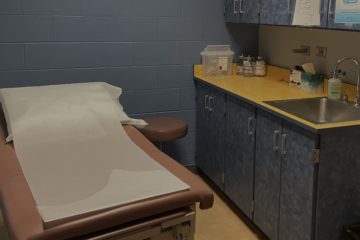Abraham Lincoln once said: “Determine that the thing can and shall be done, and then we shall find the way.”
I agree with many child protection professionals– child abuse is increasing during the COVID-19 pandemic. Why? Because most abusers are parents or siblings who now have more complete access to the child victim (90% of child sexual abuse victims know their abuser), and because the victims may no longer have schoolteachers, faith leaders or other mandated reporters who they can turn to for help, or who can detect signs of abuse.
For them, individuals like us must find a way to keep them as safe as we can. To do this, we can all play a role.
Here are just seven ideas:
1. Child protection professionals should educate mandated reporters on how their roles have changed, and how to remotely look for signs of abuse. Just as a child not completing his or her homework during an in-person school week may be an indicator something is wrong at home; it may be nothing, but training staff to identify patterns is key. Child protection professionals can work with schools to remind teachers they remain mandated reporters even though traditional classroom time is not taking place. Providing teachers with hotline numbers and other resources to expedite reports may be helpful. Child protection professionals should also remind medical professionals that their role in detecting abuse is even more critical during the pandemic.
Additionally, whether children are on campus or in virtual environments, ask your schools about their plans to implement Erin’s Law, which requires age-appropriate child abuse prevention education in 37 states, including West Virginia. For an idea of what this could look like in a virtual context, check out SHIELD Task Force’s Personal and Digital Wellness Suite.
2. Mandated reporters can help educate the public to be on the lookout for signs of child abuse. In several states, everyone is a mandated reporter; everyone who sees signs of abuse is obligated to report it. Mandated reporters should connect with those new faces and contacts coming into the lives of at-risk kids and inform them on the basics of spotting abuse.
3. Encourage kids to look out for one another. In this moment, we should be acclimating children to changes in the world around them. Some kids will not want to share video inside their homes, for example. Students should be taught how to be respective and empathetic to one another during these times. As we know, sometimes children will tell other children things that they are hesitant to tell an adult. Students should be shown how to discreetly navigate paths to telling a trusted adult.
4. School staff, make a list of at-risk children. Make a plan to check on them. Work collaboratively with child welfare staffers. It’s in the best interest of the child if systems work collaboratively.
5. Develop safety plans and affirmative resources for LGBTQIA+ youth. Research shows that these youth are at a higher risk of abuse and neglect. Child protection professionals should check on these children more frequently in this time of elevated stress and isolation.
6. Child Protective Services staff must adjust case staff and safety plans for children. Safety plans need to be developed for high-risk children.
7. Recognize that children may find different ways to communicate abuse. The pandemic has increased screen time for many children, and so, they’re spending more time on social media and in other online forums. We know that reports of online child exploitation has greatly increased during the pandemic. Child protection professionals should consider ways to monitor these communications for signs of abuse.
These are just a few ideas. Looking for more? Here’s the link to an article with 25 tips for Multi-Disciplinary Teams (MDTs). If you’re not a team member, we think you’ll still glean some important ideas from the article.
And if you’d like to learn still more, join me for my presentation on August 19 as part of Handle with Care’s 2020 Virtual Conference.
Robert Peters is a Senior Attorney with the Zero Abuse Project and Founder and Chair of the SHIELD Task Force.




0 Comments